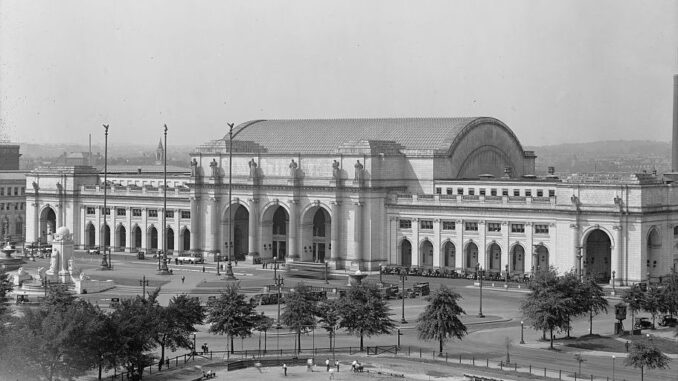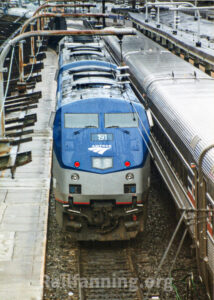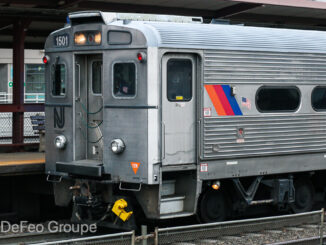
By the turn of the 20th century, the dominant railroads serving the nation’s capital had separate stations. When city leaders in Washington wanted to beautify the city, one of the major initiatives was a new train station.

So, in 1901, the Baltimore & Ohio and the Pennsylvania railroads announced plans to build a new joint station. The U. S. Senate Park Commission tapped Daniel Burnham, a well-known architect, to orchestrate a comprehensive beautification plan for the nation’s capital. The idea was to make it a fitting entrance to the city.
For inspiration, Burnham turned to Major Peter Charles L’Enfant, a French-American military engineer who was a contemporary of George Washington during the Revolutionary War and who developed the plan for the city of Washington. L’Enfant’s work helped establish the National Mall.
Burnham’s plan included a new Union Station for the district, one that removed the rail lines from the center of the Mall. The station, owned by the Washington Terminal Company, a company jointly owned by the Baltimore and Ohio Railroad and the Philadelphia, Baltimore and Washington Railroad, opened on October 27, 1907. However, workers did not complete the edifice until April 1908. The Pennsylvania Railroad moved its operations into the station on November 17, 1907.
The Northeast Corridor was the scene of some dramatic mishaps, but perhaps none was more famous than when a train fell through the floor at Washington’s Union Station. In January 1953, the station was the site of a crash involving the Federal Express passenger train from Boston. The GG-1 locomotive overran the platform and smashed through a barrier; the weight of the train caused the floor to collapse. Miraculously, no one was killed in the crash.
By 1967, as railroad traffic struggled, a commission recommended Union Station serve as a visitors’ center during the upcoming bicentennial celebration. The concept ultimately passed, and the visitors’ center opened on July 4, 1976.
However, by the 1980s, Union Station was in poor condition. In 1981, the National Park Service declared the building unsafe and ordered it closed after a portion of the station’s ceiling collapsed in the wake of heavy rain.
Union Station remained closed for a significant refurbishment project under the Union Station Redevelopment Act of 1981. In 1983, the federal Department of Transportation established the Union Station Redevelopment Corporation to help with Union Station’s restoration. The current iteration of the station opened on September 29, 1988.
From The Northeast Corridor (Images of Rail).



